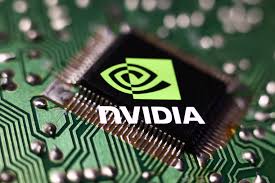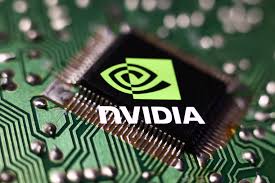
When the markets opened on a recent trading day, one of the most notable features was the value of Nvidia climbing to nearly $5 trillion, an almost unprecedented milestone. Behind the numbers lies a complex story of technological dominance, strategic positioning in artificial intelligence (AI), and rising expectations about global infrastructure transformation.
The Surge and Its Underpinnings
In that session, Nvidia’s market capitalisation surged by nearly 5 percent, adding more than $200 billion to its value and taking it from around $4.89 trillion to a short-lived high of $4.94 trillion. The moment, while still shy of the $5 trillion benchmark, commands attention for what it says about investor confidence and the company’s perceived role in shaping the future of tech.
Several factors are driving this moment. First, Nvidia sits at the core of the global AI hardware revolution. Its next-generation processors underpin the data centres and computing stacks of major technology firms, governments and research labs. With demand soaring for its recently announced architecture and for systems that rely on its chips, the company is seeing bookings and contract commitments soar. That pipeline offers both revenue visibility and the expectation of sustained earnings growth.
Second, Nvidia has successfully broadened its reach beyond gaming and graphics into data centres, AI model training and enterprise infrastructure — sectors increasingly viewed as the battleground for long-term growth. By extending its chip design into large form-factor systems and supercomputing platforms, it has built a moat that only a handful of rivals can claim.
Third, investor sentiment is hyper-focused on Nvidia’s perceived monopoly in advanced AI compute. Analysts are estimating that trillions of dollars of AI-related spending will flow into the compute and networking stack where Nvidia is dominant. That narrative has allowed the company’s valuation multiples to expand, tolerance for future execution risk to widen and expectations to mount.
Strategic Moves and Government Levers
The timing and magnitude of Nvidia’s valuation also reflect its strategic alignment with public-sector and defence infrastructure. For example, its contracts to build new supercomputers for large government agencies reinforce the company’s position at the intersection of commercial AI and national technology strategy. These engagements carry not only monetary value but also symbolic weight, underscoring the company’s strategic importance.
At the same time, Nvidia has navigated—quite deftly—the geopolitical and regulatory headwinds that often accompany global chip supply chains and AI export restrictions. While export controls and trade tensions with major markets such as China remain a challenge, the company’s ability to sustain investor enthusiasm suggests it is viewed as more than just a hardware vendor — it’s a central node in the global AI economy.
Why the Valuation Matters
Reaching nearly $5 trillion places Nvidia not just among the world’s most valuable companies, but in a league of its own — especially given the pace of its rise. It signals a broad shift in how capital markets view tech companies: not simply as profitable businesses today, but as foundational platforms for tomorrow’s computing universe.
From a market-structure perspective, a valuation of this scale raises questions about concentration risk, earnings expectations and the durability of advantage. If investor pricing is predicated on decades of growth and dominance, any hiccup in execution, regulatory regime or competitive threat could trigger outsized valuation adjustment.
For the global economy, the size of Nvidia’s value suggests that a single firm is deeply entwined with technological transformation — from AI to cloud to national security. That invites closer scrutiny from regulators, governments and competitors alike, particularly as it relates to supply-chain control, export rules and international competition in AI infrastructure.
While Nvidia’s current value reflects past performance and strong investor expectations, the forward-looking risks are real. Some of the infrastructure commitments it has announced — from next-generation chips to expanded systems — are in early phases, and large parts of future revenue depend on execution in highly competitive, capital-intensive markets.
There is also the matter of valuation support: at nearly $5 trillion, investor patience for any structural slowdown will be thin. If growth rates decelerate, margin pressures emerge or a regulatory shock hits, the valuation may look vulnerable in retrospect.
However, the upside is significant. If AI infrastructure spending indeed scales into the trillions, and if Nvidia’s leadership in that stack remains broadly uncontested, then the company could justify its valuation not just as a tech giant but as a central infrastructure firm — one akin to historical monopolies in communications or utilities, albeit in the digital age.
In sum, Nvidia’s hover at the $5 trillion mark is more than a headline: it is a statement about how markets are redefining value in a world where compute, data and models increasingly shape economic opportunity. For investors, competitors and policymakers, the rise of Nvidia offers both possibilities and tensions: the promise of accelerated technological change, and the reality of concentration, expectation and systemic significance in one company.
(Source:www.globalbankingandfinance.com)
The Surge and Its Underpinnings
In that session, Nvidia’s market capitalisation surged by nearly 5 percent, adding more than $200 billion to its value and taking it from around $4.89 trillion to a short-lived high of $4.94 trillion. The moment, while still shy of the $5 trillion benchmark, commands attention for what it says about investor confidence and the company’s perceived role in shaping the future of tech.
Several factors are driving this moment. First, Nvidia sits at the core of the global AI hardware revolution. Its next-generation processors underpin the data centres and computing stacks of major technology firms, governments and research labs. With demand soaring for its recently announced architecture and for systems that rely on its chips, the company is seeing bookings and contract commitments soar. That pipeline offers both revenue visibility and the expectation of sustained earnings growth.
Second, Nvidia has successfully broadened its reach beyond gaming and graphics into data centres, AI model training and enterprise infrastructure — sectors increasingly viewed as the battleground for long-term growth. By extending its chip design into large form-factor systems and supercomputing platforms, it has built a moat that only a handful of rivals can claim.
Third, investor sentiment is hyper-focused on Nvidia’s perceived monopoly in advanced AI compute. Analysts are estimating that trillions of dollars of AI-related spending will flow into the compute and networking stack where Nvidia is dominant. That narrative has allowed the company’s valuation multiples to expand, tolerance for future execution risk to widen and expectations to mount.
Strategic Moves and Government Levers
The timing and magnitude of Nvidia’s valuation also reflect its strategic alignment with public-sector and defence infrastructure. For example, its contracts to build new supercomputers for large government agencies reinforce the company’s position at the intersection of commercial AI and national technology strategy. These engagements carry not only monetary value but also symbolic weight, underscoring the company’s strategic importance.
At the same time, Nvidia has navigated—quite deftly—the geopolitical and regulatory headwinds that often accompany global chip supply chains and AI export restrictions. While export controls and trade tensions with major markets such as China remain a challenge, the company’s ability to sustain investor enthusiasm suggests it is viewed as more than just a hardware vendor — it’s a central node in the global AI economy.
Why the Valuation Matters
Reaching nearly $5 trillion places Nvidia not just among the world’s most valuable companies, but in a league of its own — especially given the pace of its rise. It signals a broad shift in how capital markets view tech companies: not simply as profitable businesses today, but as foundational platforms for tomorrow’s computing universe.
From a market-structure perspective, a valuation of this scale raises questions about concentration risk, earnings expectations and the durability of advantage. If investor pricing is predicated on decades of growth and dominance, any hiccup in execution, regulatory regime or competitive threat could trigger outsized valuation adjustment.
For the global economy, the size of Nvidia’s value suggests that a single firm is deeply entwined with technological transformation — from AI to cloud to national security. That invites closer scrutiny from regulators, governments and competitors alike, particularly as it relates to supply-chain control, export rules and international competition in AI infrastructure.
While Nvidia’s current value reflects past performance and strong investor expectations, the forward-looking risks are real. Some of the infrastructure commitments it has announced — from next-generation chips to expanded systems — are in early phases, and large parts of future revenue depend on execution in highly competitive, capital-intensive markets.
There is also the matter of valuation support: at nearly $5 trillion, investor patience for any structural slowdown will be thin. If growth rates decelerate, margin pressures emerge or a regulatory shock hits, the valuation may look vulnerable in retrospect.
However, the upside is significant. If AI infrastructure spending indeed scales into the trillions, and if Nvidia’s leadership in that stack remains broadly uncontested, then the company could justify its valuation not just as a tech giant but as a central infrastructure firm — one akin to historical monopolies in communications or utilities, albeit in the digital age.
In sum, Nvidia’s hover at the $5 trillion mark is more than a headline: it is a statement about how markets are redefining value in a world where compute, data and models increasingly shape economic opportunity. For investors, competitors and policymakers, the rise of Nvidia offers both possibilities and tensions: the promise of accelerated technological change, and the reality of concentration, expectation and systemic significance in one company.
(Source:www.globalbankingandfinance.com)














